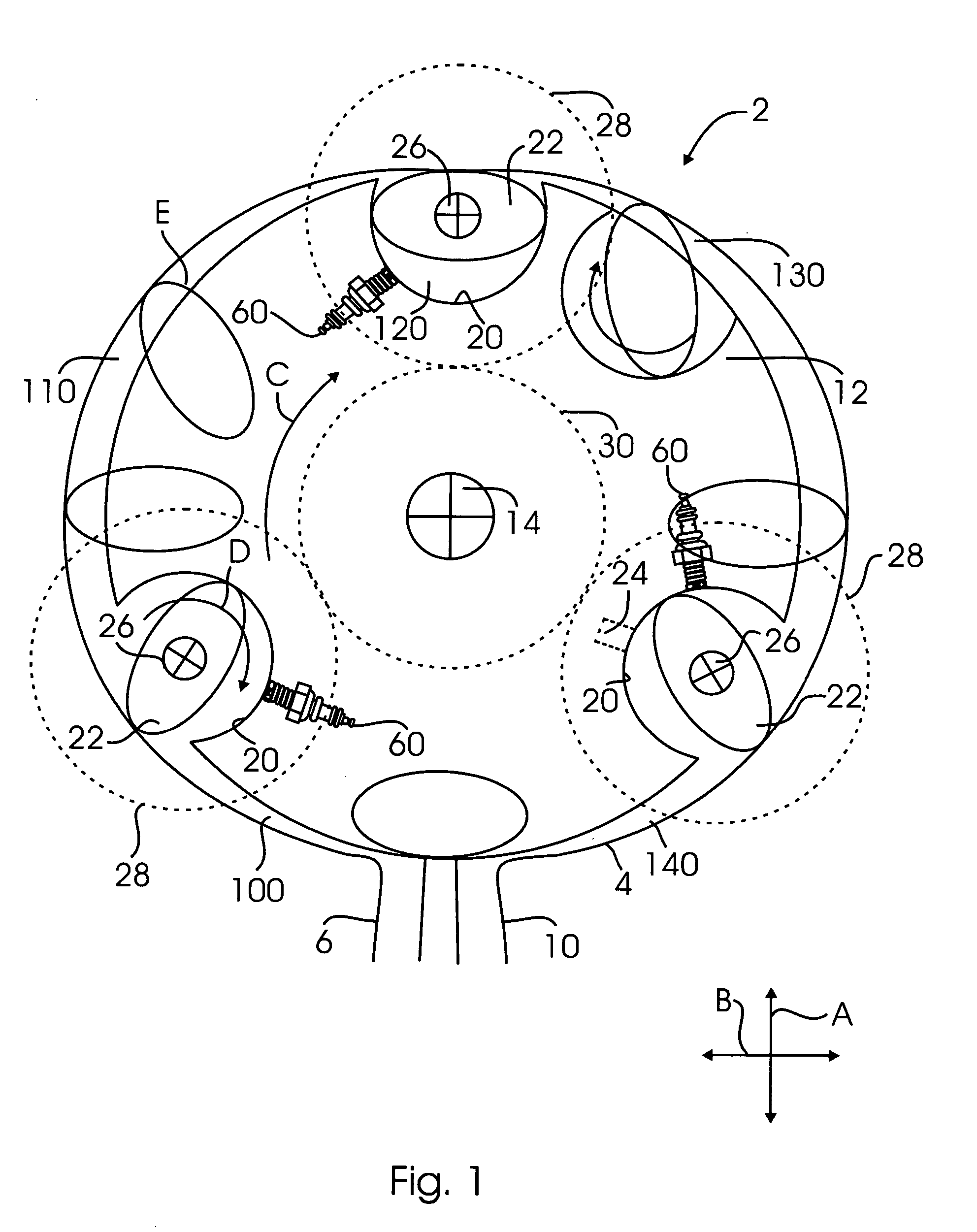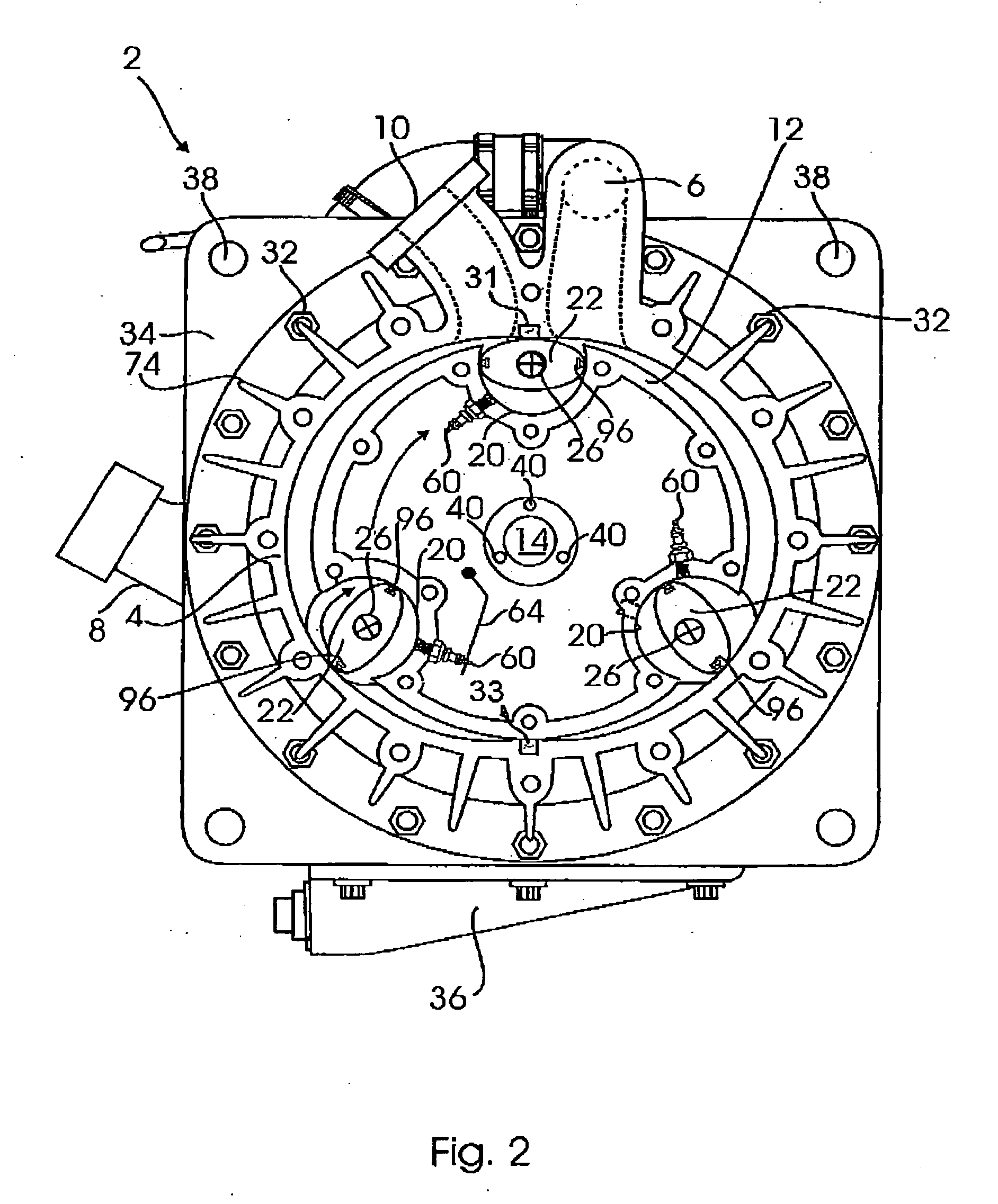Concentric internal combustion rotary engine
a rotary engine and internal combustion technology, applied in the field of combustion engines, can solve the problems of inefficient way in which components are repeatedly accelerated, stopped, reversed during engine operation, and conventional piston-based engines are both unbalanced and inefficient, and about 13% of fuel energy is lost in a conventional piston-based engine. , to achieve the effect of high horsepower, low emissions and high torqu
- Summary
- Abstract
- Description
- Claims
- Application Information
AI Technical Summary
Benefits of technology
Problems solved by technology
Method used
Image
Examples
Embodiment Construction
[0027]FIGS. 1 and 2 illustrates an internal combustion rotary engine 2 according to a preferred embodiment of the invention. The internal combustion rotary engine 2 includes a housing 4 which is generally oblong-shaped having a minor axis (the distance between the top and bottom portions of the housing 4 in the direction of arrow A shown in FIG. 1) and major axis (the distance between the left and right portions of the housing 4 in the direction of arrow B shown in FIG. 1). The housing 4 includes an inlet 6 which serves as the inlet for the fuel / air mixture which is combusted inside the engine 2. The inlet 6 may be coupled to an optional compressor 8, for example, as illustrated in FIGS. 7 and 8. The housing 4 further includes an outlet 10 which serves to exhaust combustion gases / air outside of the engine 2. In one aspect of the invention, the housing 4, when viewed in cross-section, has a profile of a spline curve.
[0028] A rotatable rotor 12 is disposed centrally inside the housin...
PUM
 Login to View More
Login to View More Abstract
Description
Claims
Application Information
 Login to View More
Login to View More - R&D
- Intellectual Property
- Life Sciences
- Materials
- Tech Scout
- Unparalleled Data Quality
- Higher Quality Content
- 60% Fewer Hallucinations
Browse by: Latest US Patents, China's latest patents, Technical Efficacy Thesaurus, Application Domain, Technology Topic, Popular Technical Reports.
© 2025 PatSnap. All rights reserved.Legal|Privacy policy|Modern Slavery Act Transparency Statement|Sitemap|About US| Contact US: help@patsnap.com



